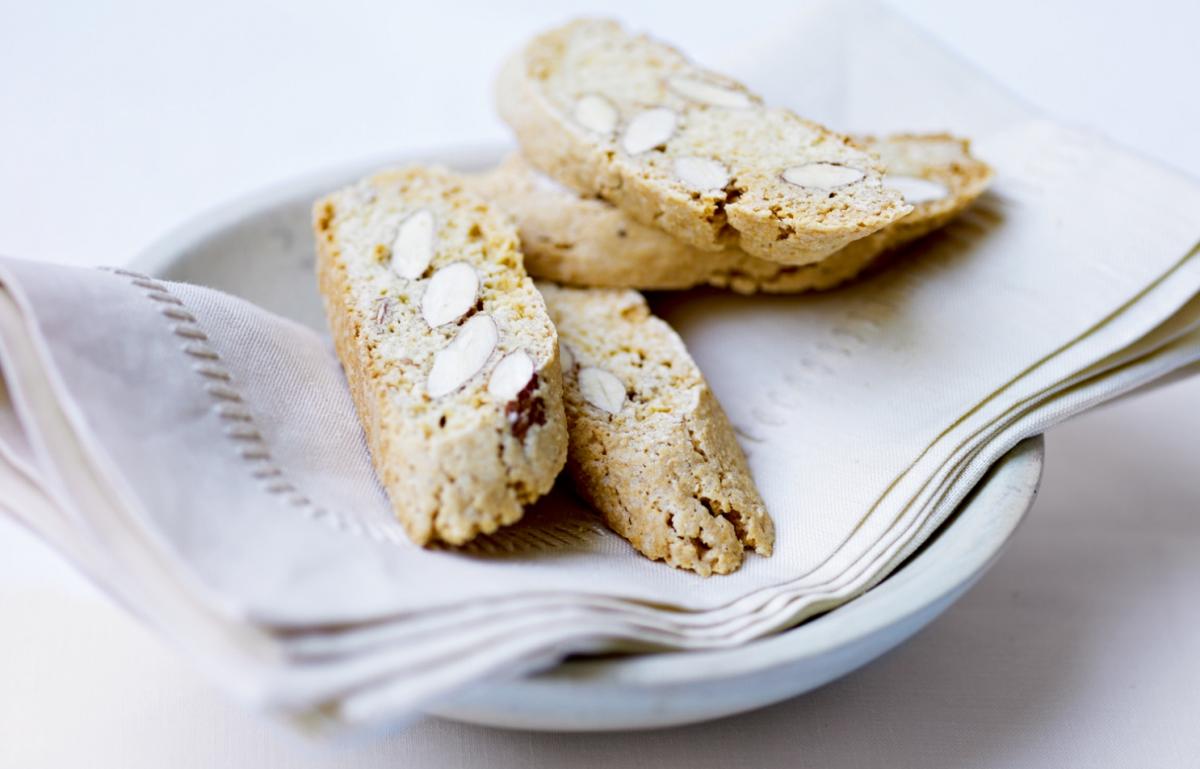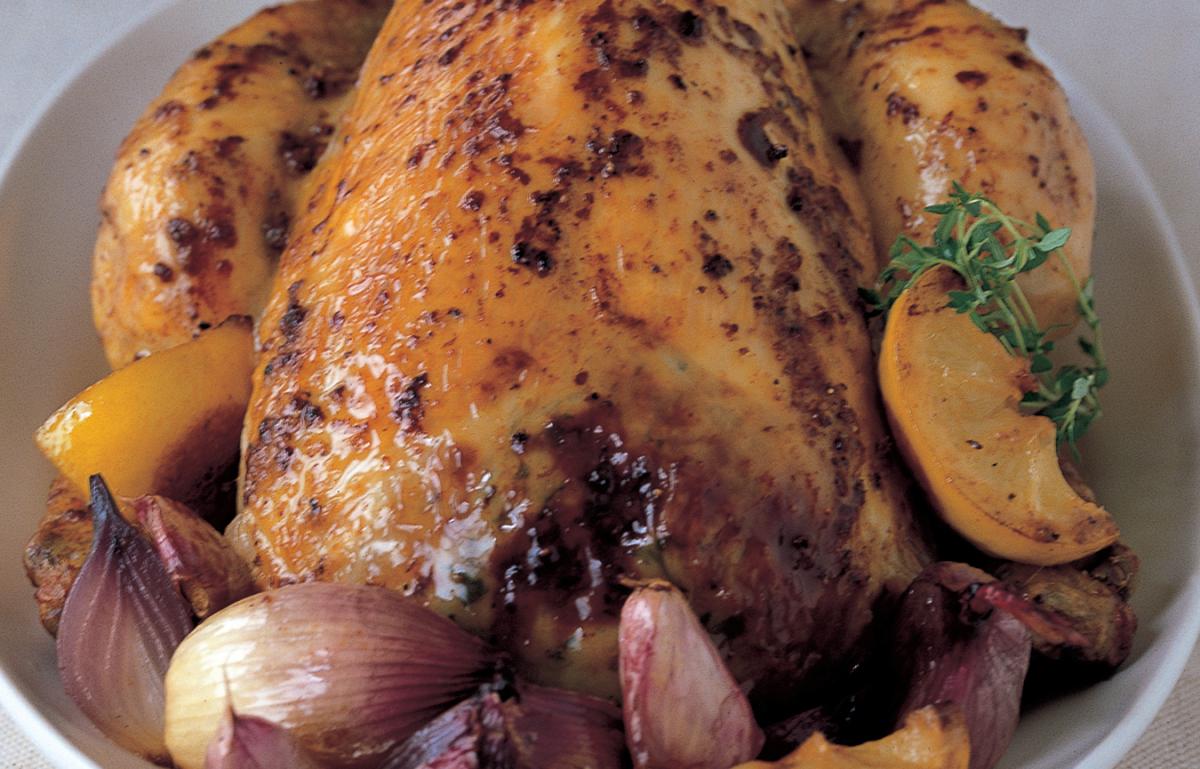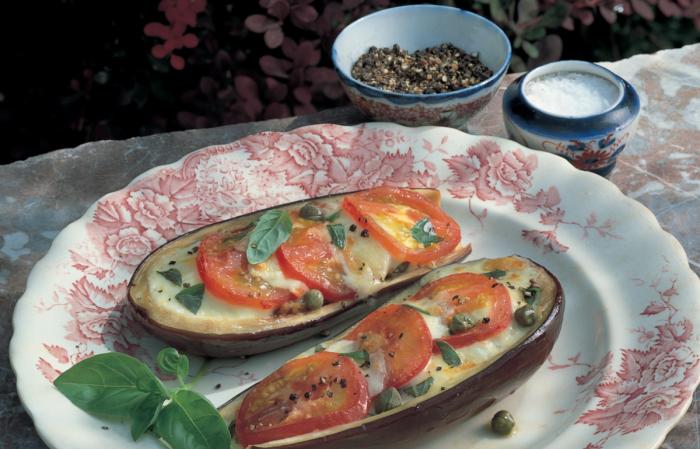


Q: Please tell me how to make the best aubergine salad (melitzanosalata)?
If you enter aubergine into the search facility on the home page you will find Delia's recipes using this versatile vegetable. You may be interested in the Tunisian Aubergine Salad with Coriander and Yoghurt
Q: I'm expecting a bumper crop of apples this year after planting several trees two years ago. We have both eating and cooking varieties, ![[object Object]](https://www.deliaonline.com/sites/default/files/quick_media/ingredient-soup-bramley-apples.jpg) as well as crab apples. Apart from pies and crumbles what else can I do with them?
as well as crab apples. Apart from pies and crumbles what else can I do with them?
If you enter apple into the search box on the home page you will find lots of different recipes that are sweet and savoury which can be created using your wonderful crop of apples.
Q: Which bit of a pawpaw is edible? And how do you know if it's ripe?
When ripe, a pawpaw (or papaya) should, like an avocado, have some 'give' when you hold it in your hand and exert a little pressure. To prepare it, slice it in half vertically, scoop out and dispose of the seeds, pare off the skin and slice or chop the flesh. Click here to see How to prepare exotic fruit
Q: What is the difference between flat-leaf and curly parsley?
Curly parsley is a hardy herb with bright green tightly curled leaves. It is used primarily as a garnish when it is usually very finely chopped and sprinkled over savoury dishes. It is also an essential component of bouquet garni. Flat-leaf parsley, which is also known as French or Italian parsley, is less bitter with a fuller flavour.
Q: I love the flavour of fresh coconut but could you tell me how to crack one properly?
Cracking a coconut is not as difficult as it might seem. Push a skewer into the three holes in the top of the coconut and drain out the milk. Then place the coconut in a polythene bag and sit it on a hard surface – a stone floor or an outside paving slab – and give it a hefty whack with a hammer. Now remove the pieces from the bag and, protecting your hands, prise the hard shell away from the nut with the top of a knife. Take off the inner skin using a potato peeler. Click here to see How to crack a coconut
Q: Why do you skin tomatoes in most circumstances? Is it for texture or does skinning them have a special significance?
![[object Object]](https://www.deliaonline.com/sites/default/files/skinnedtomato230.png) Delia doesn't suggest skinning tomatoes in all of her tomato recipes but, where she does, it is done for texture reasons. Skinning gets rid of little bits of tomato skin that would still be left in, even when you have put it through a blender or food processor. It saves sieving your sauce or soup to get rid of the skins later on! Wath how to do this in our Online Cookery School Video and click here for Delia's Classic Fresh Tomato Sauce recipe.
Delia doesn't suggest skinning tomatoes in all of her tomato recipes but, where she does, it is done for texture reasons. Skinning gets rid of little bits of tomato skin that would still be left in, even when you have put it through a blender or food processor. It saves sieving your sauce or soup to get rid of the skins later on! Wath how to do this in our Online Cookery School Video and click here for Delia's Classic Fresh Tomato Sauce recipe.
Q: Is there a secret to knowing when a pineapple is ripe?
When buying a pineapple look for proud, lively green tufts that don't look too aged or tired. Give a leaf a tug: if it's ripe it should pull off easily. Also, check that the little thorny bits that stick out all over its skin are brown. Feel the pineapple at the base: it should give a little and feel soft if it's ripe. And don't forget to smell its strong pineapple perfume, probably more indicative of ripeness than anything. Click here to see How to prepare exotic fruit
Q: When is the best time to eat a passion fruit?
Passion fruit are often in good supply in the winter, though in theory they are available all year round. When you buy a passion fruit, look for a crinkled skin which is a sign of ripeness. To eat, just slice the fruit in half and scoop out the edible seeds and all the lovely juicy flesh that surrounds them. Click here to see How to prepare exotic fruit
Q: Is there a way to use orange segments in a recipe without all the pith?
Place the orange on a board, pare off the skin and as much of the pith as possible. Then, holding the peeled orange in one hand over a bowl, cut out the segments by slicing the knife in at the line of pith which divides the segments, leaving as much of the pithy membrane behind as possible.
Q: How do you know when a mango is ripe?
There is a simple way to test the ripeness of a mango: hold one and check that it feels heavy and gives off a powerful and fragrant aroma through the skin. Under-ripe mangoes can be placed in a brown paper bag and left to ripen in the dark at room temperature. Click here to see How to prepare and serve a mango
Q: I never know whether potatoes should be added to cold water or hot water to boil, what do you suggest?
My own opinion on boiling main-crop potatoes is to add them to boiling water, rather than using cold water and bringing it up to the boil. This is based on the idea that, in general, water is the enemy of flavour, so the less time the potatoes spend in it the better.
Q: When salting aubergines I find that they end up making the dish too salty – should I rinse them?
Aubergines are quite absorbent, so I wouldn't normally suggest rinsing them. I think the problem may have been that you were a little over-generous with the amount of salt used for sprinkling over the aubergines. You only need about 1 level dessertspoon in total and then dry the aubergines with kitchen paper to remove the excess salt.
Q: I can't seem to find any recipes for quinces – can you recommend any?
Because quinces are not usually grown commercially these days, it's unlikely that you will find recipes for their use in modern books. However, a good source would be the reference section at your local library where there may be some older English classic cook books and Jane Grigson covers them in her excellent publications Fruit Book and English Food (Penguin Cookery Classics) and Good Things (Michael Joseph).
Q: What is a Jerusalem artichoke and does it taste anything like a globe artichoke?
The Jerusalem artichoke is an underground tuber which tastes vaguely like a globe artichoke – hence its name. The Jerusalem comes from girasole, the Italian for sunflower, to which plant family it belongs. The Jerusalem artichoke's nutty, sweet flesh can be used raw, peeled or scrubbed and sliced thinly, in salads, cooked in soups and gratins or roasted like potatoes. Type artichoke into the search on the home page for Delia's recipes.
Q: I would like to know the best way to finely chop an onion with a knife.![[object Object]](https://www.deliaonline.com/sites/default/files/quick_media/ingredient-chicken-chopped-onions.jpg)
Delia says that the best way to deal with onions is as follows:
Slicing If you want to slice onions, cut off the root end, then peel away the skin. Slice in whole round slices and separate into rings, or else cut the onion in half first and then slice into half-moon shapes.
Chopping rough is making about three cuts vertically across each onion and then three horizontally.
Chopping small (without a processor) This time leave the root intact, then peel away the skin from the top end. Now cut the onion in half and place each half on a flat surface, round side up. Next, make cuts vertically from the root end but leaving the root intact to hold it together. Then make horizontal cuts across the vertical cuts whilst you hold on to the root end firmly.
The last cut will be the little root bit, and this can be discarded. Click here to watch How to slice and chop onions
Q: Your Roast Salmon with Pesto is one of our favourites. I serve it with lemon and coriander flavoured couscous, but what vegetables, other than peas, could I serve it with?
Serving Delia's Roasted Salmon Fillets with your lemon and coriander flavoured couscous means there are lots of flavours – a plain green vegetable would make a very good accompaniment – see what looks good and fresh in your local shops, and check what's In Season in the ingredients section of the site. As an alternative you could try a cucumber salad – thinly slice the cucumber, sprinkle the slices with salt to draw out the moisture, drain and dry well and perhaps dress it with a lemony vinaigrette , click here to watch How to make vinaigrette
Q: I live in the Netherlands but I use mostly English and American cook books. I often come across a herb named cilantro, which is not known here. What is it?
Cilantro is another name for coriander.
Follow us Like us on Facebook Follow us on twitter Follow us on instagram Follow us on pinterest Follow us on youtube
© 2001-2024 All Rights Reserved Delia Online